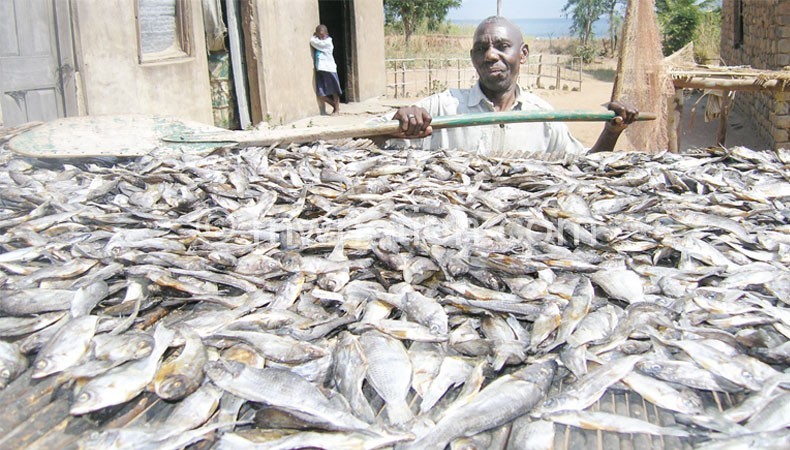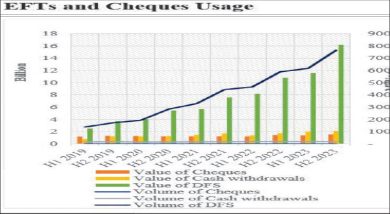Can the ‘blue economy’ finally tick for Malawi?

Consumers Association of Malawi (Cama) executive director John Kapito may be outspoken but deep down his advocacy noise seem to lie a deafening silence of sense and sensibility, well embedded in his deoxyribonucleic acid (DNA).
“That must be a joke of a century. How can we say we need to export and fetch more to complement our revenue when we have got deficiencies at home; when the so called ‘cheapest’ source of animal protein is rarely affordable on the common market. Actually, the shelf prices are prohibitive so much that chickens are somehow affordable and yet we have more water bodies than we have hen pens,” said Kapito.
He was commenting on assertions that Malawi fish, led by the chambo, is much sought after on the regional and continental markets, owing to its fresh water habitat; thus calling for more exports in the same.
Lake Malawi was declared a World Heritage Site by United Nations Cultural Organisation (Unesco) in 1984 on grounds that a sizeable part of the 1 000 fish species in it cannot be found anywhere else in the world.
Of late, trade experts have been saying that the country stands to cash in on the fish markets if it invests enough towards its aquaculture and fisheries sectors. Others have even touted the sector as the best option to diversify the country’s sick economy that largely hinges on tobacco farming.
In fact, Food and Agriculture Organisation (FAO) reports rates Malawi as one of the countries with the fastest growing aquaculture sectors on the continent, a move experts said can enhance its markets amid regional population growth.
–Fishing in Malawi–
According to the head of fisheries at New Partnership for Agriculture Development (Nepad) agency in South Africa, Sloans Chimatiro, the sector currently provides employment to about 12 million Africans, with women playing a preponderant role particularly in post-harvest activities, of processing and marketing.
“On the continent itself, recent estimates of total fishery production is 9.4 million tons with aquaculture contributing about 1.4 million tons. At the global level, Africa marginally increased its contribution to global agriculture from 1.2 percent to 2.2 percent in the past 10 years. The [above] statics clearly call for increased focus on appropriate capacity development for the sustainable management of our resources,” he said.
In Malawi, fishing contributes about four percent to the gross domestic product (GDP), and the sector employs some 300 000 people. However, fish stocks in the lakes and the rivers of the country have been dwindling over the years due to over-fishing.
But while impressive progress has been achieved in other countries in the region, Malawi’s aquaculture is far from achieving its potential of contributing to food security and income.
Recent reports suggest that the per capita fish consumption has declined on the African continent as a whole to less than half of the global average of about 19 kilogrammes per person per year. This is, in part, due to the rising cost of fish products on the local market.
“We used to have chambo for almost twice a week. It’s now a luxury we only can afford at month-ends. Imagine a single fish going at K1 800?” says Angela Malajira, a widow of four from Lilongwe’s Area 23 suburb.
And Yusufu Magola a fishmonger at the city’s central market agrees.
“Basically, the demand here is heavily dependent on the consistency of the prices of the fish. There are times we just slash the price for fear of the fish going bad. Most of us don’t have the necessary facilities to keep our fish fresh all day. But on a good day, we make a killing out of it.”
Concurring with the two, the country’s fish directorate partly attributes the commodity’s high prices to high demand due to increasing population. But overfishing remains the main culprit.
–Over Fishing–
Director of Fisheries, Alexander Bulirani, painted a clear picture on the state of the country’s fisheries.
“The problem of over-fishing had been worsened by the fact that fishermen do not respect fish bans or regulations which require them to return to the water any fish than is less than 15 centimetres long that is caught unintentionally,” he said.
Bulirani said they also insist on using fishing nets with very small meshes, contrary to national fisheries management regulations.
“The fishermen say they over-fish because they don’t have any other way of surviving and earning a living. But this argument doesn’t make sense. How do farmers who rely on rains once a year survive during the dry season?” he asked.
Whatever the case, there is a need to sustain or sustainably increase the current benefits from the exploitation of the country’s fisheries and aquaculture resources as well as put measures in place for recovery of depleted resources.
The worrisome state of exploitation of these resources is a contributor to the observed decline combined with population growth. This raises serious concern for the country since fish, in most families, is relatively the most affordable animal protein source.
Little human and institutional capacity is also said to be a key constraint for positive reform of the fisheries and aquaculture sector for 40 years. The relatively slow pace of aquaculture development in the country as an alternative fish production technology.
Deputy vice-chancellor of Lilongwe University of Agriculture and Natural Resources (Luanar), agreed that the challenges are cross-cutting and deep-rooted and that solving them will require a holistic approach.
However, there seem to be hope as the African Union (AU) agreed on policy framework and reform strategy for African fisheries and aquaculture whose main purpose is to facilitate coherent policy development for the sustainable management of fisheries and aquaculture resources within its member States.
–Building Capacity–
Amongst the key strategic area was to enhance the capacity of people and institutions in the fisheries and aquaculture, based on current and emerging trends, challenges and needs.
Kaunda said growing the sector should start with the smallholder farmer plying their trade in private dams.
He said fish harvested from such ponds may complement those from the country’s main water bodies in improving livelihoods and securing food and nutrition security.
Chimatiro agreed: “Malawi’s aquaculture sector has grown in the past five to 10 years and this is really commendable. It’s even more encouraging to note that the Luanar is engaging communities in promoting the sector as Nepad sees the future of the sector lying in the close collaboration between scientific research and the farmer practising fishery on the ground.”
Promoting the sector may, therefore, be a great manifestation of the county’s unrelenting efforts to secure lasting and sustainable livelihoods for millions of its citizens by unleashing and harnessing the potential benefits from our natural resources base, in this case, the blue economy and particularly, fisheries and aquaculture.
But unless the country has enough for itself, value addition, let alone export of fish, will remain a pipedream; just as Kapito put it!
What with child stunting, underweight and wasting seem to be prevalent in many a child in the country. Yet the country’s population of around 16 million is said to be dominated by the youth.
The importance on the need for increased animal protein consumption in rectifying such a disturbing picture can never be overemphasised.






Tobacco farmers don’t lose hope. There’s jet fuel (not one stolen) from tobacco.